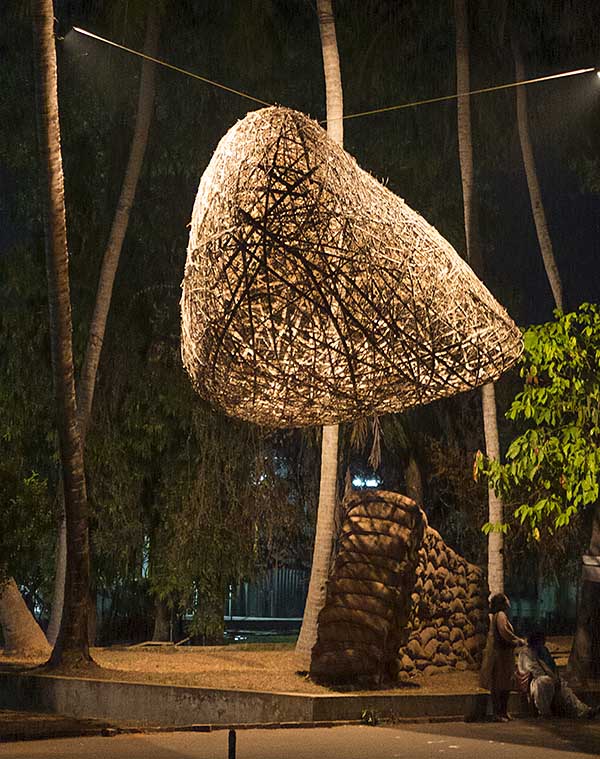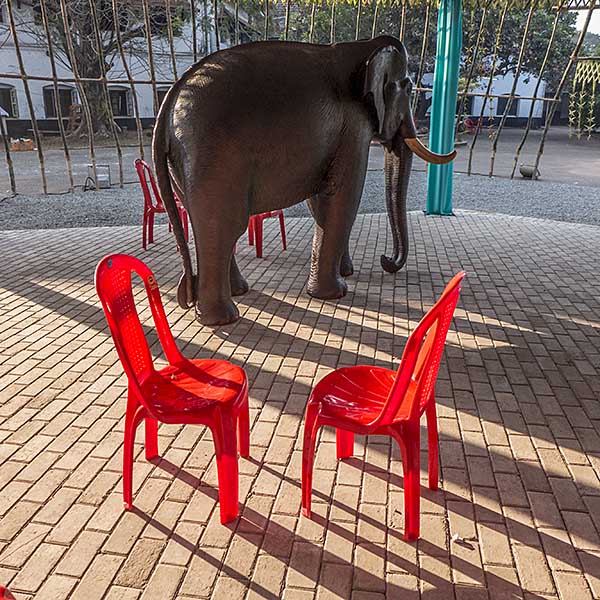Kochi Muziris Biennale Symposium
Date: December 15th – 16th
Venue: Outset Carnoustie Pavilion ? Aspinwall
Co-organised by: Marieke Van Hal (Biennial Foundation)
Symposium advisors: Gayatri Sinha (Critical Collective), Paul Domela (Liverpool Biennial)
The location of India?s first biennale in Kochi marks a seismic in the way art will be seen in the subcontinent. In replacing the model of a state supported metropolitan exposition ? that continued from the late 1960s to the early 2000s ? the Kochi Muziris Biennale celebrates the political and cultural aggrandisement of the region. In terms of curatorial initiative it also claims another level for the artist in the domain of entrepreneurial activism.

The challenge for the new biennale in South Asia is not to reflect global parameters; rather it is to create sense of an aesthetic moment as it unfolds before us. At the same time shifts in location and structure imply a shift in politics in India as much as in art.
Amartya Sen has written of the three kinds of writing as emanating from India, as the exoticist, the magisterial and the curatorial. The large scale exhibition such as the Kochi Muziris Biennale that blurs the distinctions of nation pits the categories of the curatorial against the exoticist and the magisterial to create a thoroughly contemporary view of art practice.

The two day international seminar which will bring together leading curators, academics and artists from India and abroad is intended to excavate the rich cultural potential of the biennale. As an instrument of artistic collaboration, the biennale with its local and cosmopolitan character established on the historically rich site of creates a unique axis for the making of a new cultural sector. Located outside the metropolitan, heavily mediatized industrial cities of India, the KMB opens a new chapter of political and cultural realization in the arts.
Within India/South Asia, the KMB draws upon the cosmopolitanism of Muziris as a 14th century ancient trading port and the modern history of Kochi-Muziris, a city-space with a composite communal and ethnic identity.
Curated by two artists in its first edition, the biennale is enabling as a historical and a political gesture, a form that carries within it the promise of immanence and a commitment to perpetual change.
Site Imaginaries
The Kochi Muziris Biennale actively engages the rich domain of cosmopolitanism and modernity that is rooted in the lived and living experience of this old trading port, which, for more than six centuries, has been a crucible of numerous communal identities.
It is necessary to explore and retrieve memories in the current global context to posit alternatives to political and cultural discourses, and build a platform for dialogue for a new aesthetics and politics rooted in the Indian experience. From a global perspective we also need to examine the artist as manifest in expanding geographies, and a redefinition of the regions of art. The two-day international seminar to coincide with Kochi-Muziris Biennale will discuss these issues pertinent to the biennale.
Saturday December 15th
4.30pm ? 5.30pm:
Biennale as Imaginary: An Artist Prepares
In the absence of the ?biennale experience? in India/ South Asia, how does the biennale exist in the artist?s imaginary? How does the artist engage and deal with a curator?s subjectivity? In the subsuming of art criticism into the curator?s domain how does the artist recuperate agency?
Can an artist work without anticipating curatorial inputs, exhibitionary circuits and the curator?s ?text?, which includes exhibition, artwork and catalogue? Finally is the transcultural curating experience inevitably privileged in favour of the curator?
Gayatri Sinha (Speaker and Moderator)
Nalini Malani
Dr. Shahidul Alam
Kochi Muziris Biennale & Biennial Foundation Symposium
Please Retweet #Kochibiennale #art #India #Bangladesh #Kerala





Leave a Reply
You must be logged in to post a comment.